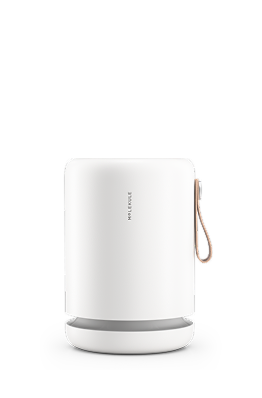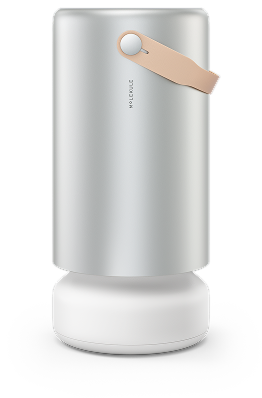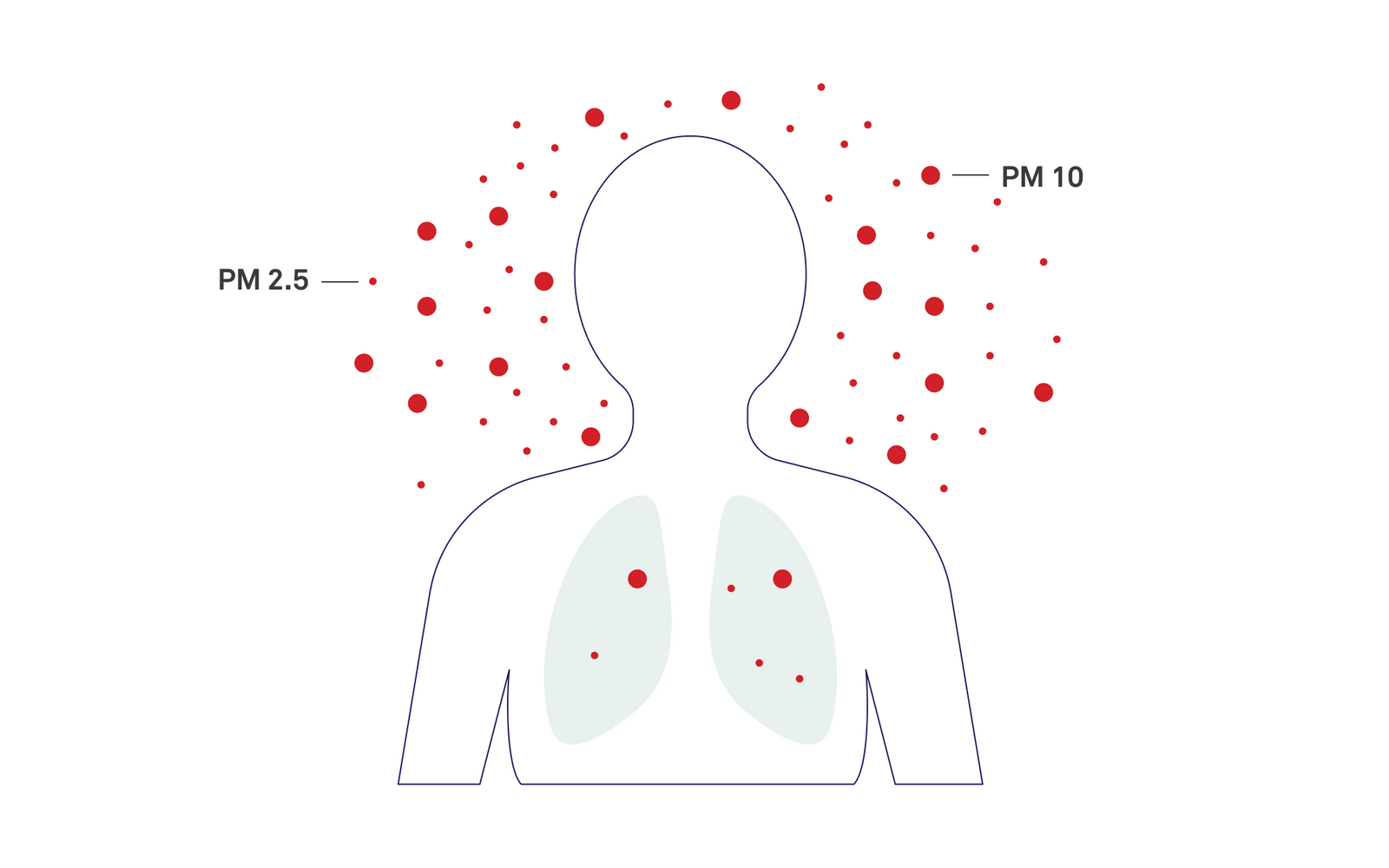Particle pollution is a broad term that describes a complex mixture of solid particles and liquid droplets suspended in the air. Also called particulate matter (PM), this class of pollutants includes inorganic compounds, organic chemicals, metals, dust and soil particles, mold spores, pollen, and other biological materials—basically, anything that’s small and light enough to float.
Airborne particles vary considerably in size and shape. Some are big enough to see with the naked eye, but most are microscopic. The greatest health concern associated with particle pollution comes from particles that are 10 microns (µm) in diameter or smaller, which include coarse, fine, and ultrafine particles.
Where does particle pollution come from?
Particle pollution can come from almost anywhere. Some particles come from natural processes, such as volcano activity, dust storms, wildfires, and living plants. Others are made by human activities, like construction, fossil fuel burning, metalworking, woodworking, and manufacturing. Even household activities like cooking, vacuuming, and dusting can create particle pollution.
Another type of particle pollution, called secondary particles, is created through chemical reactions in the atmosphere. Secondary particles are the primary source of fine particle pollution in the U.S.
Particles created mechanically (like the dust that flies into the air when you cut wood or metal) or biologically (like pollen) are more likely to be coarse particles. Particles created by fossil fuel burning, wildfires, or other types of combustion are more likely to be fine particles.

What is coarse particle pollution?
Coarse particle pollution (PM10) includes all airborne particles with diameters greater than 2.5 µm and smaller than or equal to 10 µm. Examples of PM 10 include dust, pollen, mold spores, and bacteria. Fortunately, our lungs have plenty of defenses to protect us from most of the larger particles we breathe in. Most PM10 gets trapped in mucus in your respiratory tract before it can travel into the lungs, and you get rid of it when you sneeze, cough, swallow, or clear your throat. Exposure to PM10 can irritate your eyes, nose, and throat, but it rarely causes serious health problems on its own.
What is fine particle pollution?
Fine particle pollution (PM2.5) includes particles 2.5 µm in diameter or smaller. Particles this size are more dangerous than PM10 because they’re small enough to bypass our body’s defenses and travel deep into the lungs. Exposure to high levels of PM2.5 for more than a few hours can increase the risk of cardiovascular problems, reduced lung function, aggravated asthma and other respiratory symptoms, and premature death in people with heart or lung disease.
What is ultrafine particle pollution?
Ultrafine particles are even smaller (and more dangerous) than PM2.5. Around 0.1 µm in diameter or smaller, these particles are small enough to get deep into the lungs, pass through the lung tissue, and enter the bloodstream. Once in the bloodstream, PM0.1 can start circulating around the body, exposing the organs to potentially toxic chemicals.
What is the environmental impact of particle pollution?
Due to their small size, airborne particles can travel great distances by wind until they eventually settle on the ground or in water. According to the EPA, particle pollution can make rain more acidic, damage farm crops and sensitive forests, and deplete nutrients in soil, coastal waters, and large river basins. In the long term, these effects can decrease biodiversity and even ruin some delicate ecosystems.

How can you measure particulate matter in the air?
Particulate matter sensors can determine the level of particle pollution in the air by using lasers or other forms of light to measure the size and concentration of airborne particles. Basic PM2.5 monitors can cost between $50 to $100, and many come with a variety of app integrations and other features.
Some air purifiers may also have built-in PM sensors. The PM sensors on Molekule Air Pro and Molekule Air Mini+ detect PM10, PM2.5, and PM1 to give you a holistic view of the particle concentration in the room. This data is collected and displayed in the Molekule app, along with stats for volatile organic compounds (VOCs), carbon dioxide (CO2), and relative humidity, to help you stay informed of your home’s indoor air quality.







